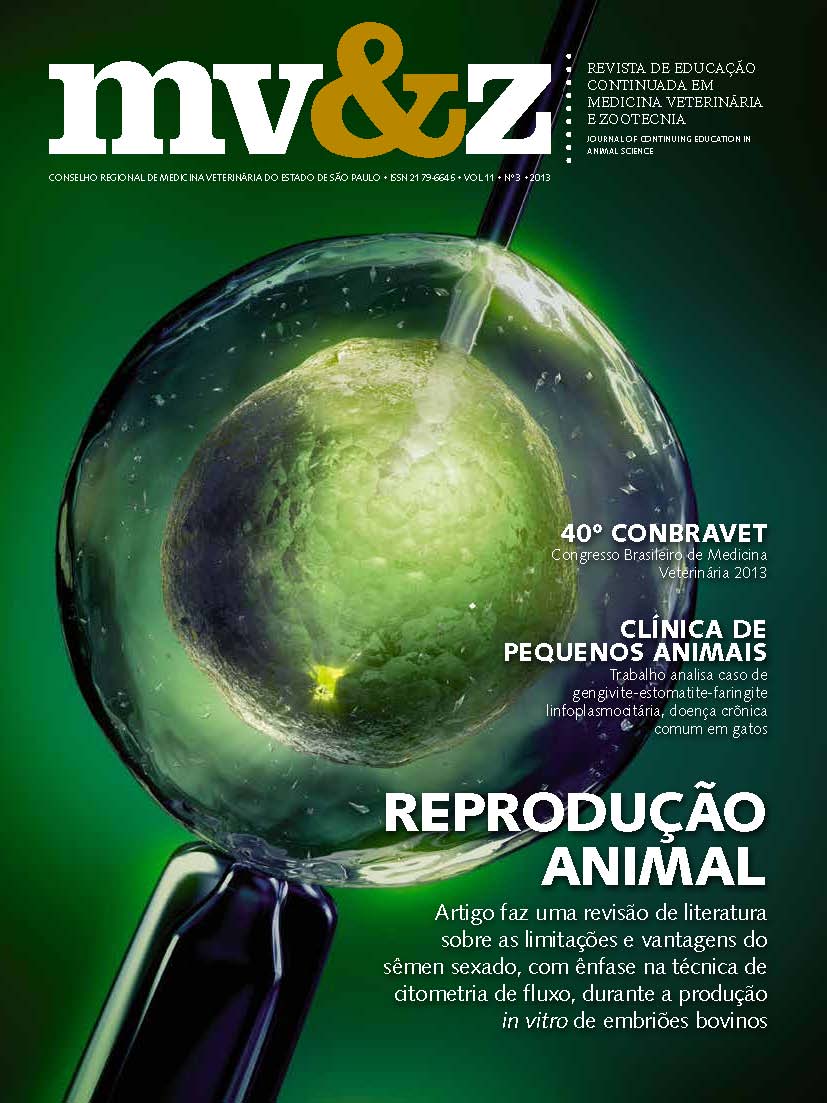Comparison of in vivo and in vitro transfection of antibodies against rabies
Main Article Content
Abstract
This study describes the comparison of in vivo and in vitro transfection of antibodies to use as a new mechanism for antiviral therapy against rabies. The transfection was made in vitro with neuroblastoma murine cell line (Neuro‐2a) and in vivo with 21 years old mice. Both cells and mice were infected with different infectious doses (0.1; 1.0; 10 and 100 ID50) of the rabies virus. After 24 hours the infected cells and mice were transfected with polyclonal antibodies against rabies produced in equines (unpurified hyperimmune serum ‐ total antibody) using a cationic reagent, the lipofectamine 2000 previously diluted 1:20, for the negative transfection control, only minimum essential medium was used. The ability of the antibodies to neutralize the rabies virus in vitro was determined by counting the number of fluorescent foci for each of the infectious doses and comparing the results with the controlling group to give the percentage inhibition. The ability of the antibodies to neutralize the rabies virus in vivo was determined by counting the number of mice that survived or died 35 days after the transfection in compare the controlling group. The results of neutralization showed that for lower viral concentrations (0.1 and 1.0 ID50), viral inhibition was 100% for the in vitro and in vivo transfection. When were used 10 and 100 ID50, the viral inhibition was 89,2 % and 90,3% respectively in the in vitro transfection, all mice died when these doses are used in the in vivo transfection. In conclusion, when higher viral concentrations were used the results of in vitro transfection do not are reflected in vivo. The viral load of the patient that was exposed is an important point to decide the most efficient mechanism for use in antiviral therapy against rabies.
Article Details
1. Autores mantém os direitos autorais e concedem à revista o direito de primeira publicação, com o trabalho licenciado sob a Creative Commons Atribuição-NãoComercial-SemDerivações 4.0 Internacional
2. Autores têm autorização para assumir contratos adicionais separadamente, para distribuição não-exclusica da versão do trabalho publicada nesta revista (ex.: publicar em repositório institucional ou como capítulo de livro), com reconhecimento de autoria e publicação inicial nesta revista.
3. Autores têm permissão e são estimulados a publicar e distribuir seu trabalho online (ex.: em repositórios instituicionais ou na sua página pessoal) a qualquer ponto antes ou durante o processo editorial, já que isso pode gerar alterações produtivas, bem como aumentar o impacto e a citação do trabalho publicado (Veja O Efeito do Acesso Livre);
